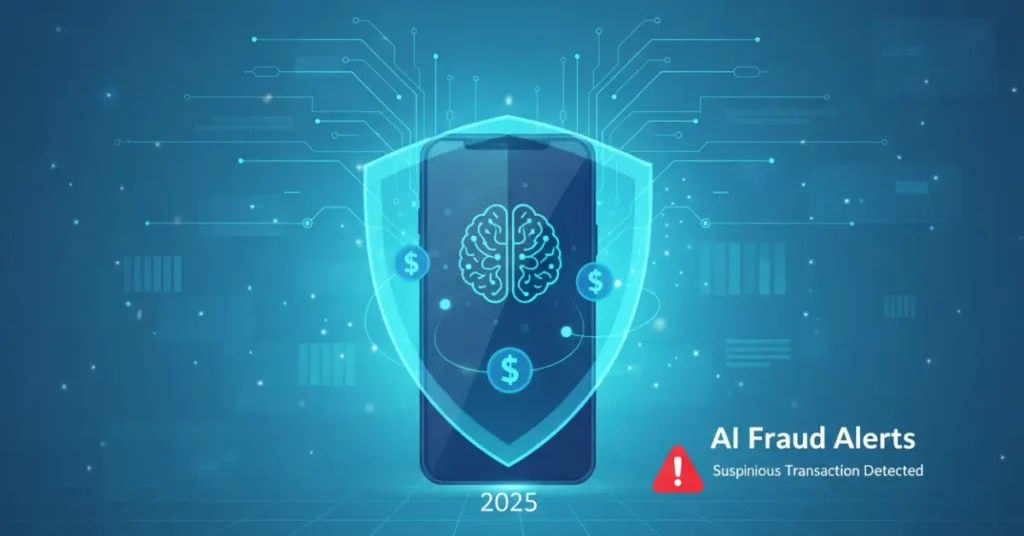In today’s world, where nearly every transaction happens online, financial fraud has become one of the most alarming digital threats. From phishing scams to unauthorized transactions, the risk of losing money has never been higher. Fortunately, artificial intelligence (AI) is revolutionizing how people protect their money. AI fraud alerts are now the fastest and most reliable defense against suspicious activity, helping individuals and banks detect problems in real time before damage occurs.
This article explores how AI fraud alerts work, which tools lead the industry, and how you can enable these systems to safeguard your personal finances in 2025 and beyond.
The Rising Threat of Digital Fraud
Every year, millions of Americans fall victim to financial scams. According to the Federal Trade Commission, consumers reported over $10 billion in losses due to fraud in 2023 a number expected to climb as cybercriminals use advanced technologies.
Traditional fraud detection systems rely on static rules, such as checking for unusual spending amounts or sudden geographic changes. But today’s scammers easily bypass these outdated safeguards. They mimic real user behavior, making it difficult for old systems to recognize fraud until it’s too late.
That’s where AI-powered fraud alerts come in. They analyze your financial activity continuously, learn your normal habits, and instantly identify patterns that look suspicious all within seconds.
What Are AI Fraud Alerts?
AI fraud alerts are intelligent systems built using machine learning algorithms that monitor transactions in real time. Unlike traditional alerts, which rely on rigid thresholds, AI systems evolve and adapt. They analyze thousands of data points such as device type, spending frequency, transaction location, and timing to detect unusual behavior.
For example, if you typically use your credit card in New York and suddenly a charge appears from California, the AI system cross-checks the time, IP address, and spending pattern. If it seems out of character, it immediately sends you a fraud alert through your banking app, text message, or email.
This continuous learning process allows AI to make faster and smarter decisions, reducing false positives and catching genuine fraud before it drains your account.
How AI Protects Your Money in Real Time
AI’s real-time monitoring capabilities make it an essential tool for modern banking and online security.AI fraud alerts Here’s how it works behind the scenes:
- Behavioral Analysis
AI learns your financial habits — such as average spending, purchase types, and transaction frequency — to build a unique profile. Any deviation triggers instant alerts. - Pattern Recognition
Machine learning models can recognize complex fraud patterns that humans might overlook. They spot trends in fraudulent behavior across thousands of users to predict attacks. - Cross-Channel Monitoring
AI systems track multiple financial channels at once, including credit cards, online transfers, and digital wallets. This ensures comprehensive protection. - Predictive Risk Scoring
Each transaction receives a “risk score.” If the score exceeds a certain threshold, the system can automatically block the transaction until it’s verified. - Adaptive Learning
As fraud tactics evolve, AI continuously updates its models, ensuring it stays ahead of emerging threats.
This combination of automation and intelligence means that by the time a scammer attempts to breach your account, AI has already detected and stopped it.AI fraud alerts.
Top AI Tools for Fraud Detection in 2025

The fintech world is full of platforms using AI to secure users’ finances.AI fraud alerts Here are some of the most recognized tools in the industry:
| AI Tool | Key Features | Best For |
| Darktrace AI | Detects insider and external fraud using self-learning algorithms | Banks and financial institutions |
| Kount | Monitors e-commerce and payment fraud in real time | Online retailers and marketplaces |
| Feedzai | Transaction analysis and risk management for fintech apps | Digital banks and startups |
| Zscaler AI Security | Cloud-based AI protection for financial data transfers | Businesses handling sensitive client information |
| FICO Falcon Fraud Manager | Advanced analytics and predictive modeling | Large banking systems |
AI fraud alerts Each platform uses slightly different techniques, but they all share one goal: to identify and stop fraud before it impacts your money.
Benefits of Using AI for Financial Security
Adopting AI-based fraud alerts provides a level of protection that traditional methods can’t match. Here are the major advantages:
- Real-Time Protection – AI detects threats instantly, allowing users and banks to act before funds are lost.
- Fewer False Alarms – By learning behavior over time, AI reduces unnecessary alerts and focuses on genuine risks.
- 24/7 Monitoring – AI systems never sleep. They constantly analyze data, even when you’re offline.
- Enhanced Accuracy – Machine learning improves detection precision through continuous feedback loops.
- Personalized Alerts – The system adapts to your financial lifestyle, offering customized fraud prevention.
- Predictive Security – AI doesn’t just react to fraud; it predicts it by identifying early indicators.
In essence,AI fraud alerts AI transforms financial safety from a reactive process into a proactive shield.
AI vs. Traditional Fraud Detection Systems
| Feature | Traditional Systems | AI-Powered Systems |
| Detection Speed | Minutes to hours | Real time |
| Learning Ability | Static rules only | Adaptive machine learning |
| Accuracy | Prone to false positives | Highly accurate with fewer errors |
| Coverage | Limited to single accounts | Cross-platform and cross-channel |
| Scalability | Manual updates required | Automatic and continuous updates |
This comparison shows why AI has quickly become the industry standard for fraud prevention AI fraud alerts it’s faster, smarter, and always improving.
How to Set Up AI Fraud Alerts for Your Accounts
You don’t need to be a tech expert to take advantage of AI fraud protection. Here’s how you can enable it:

- Activate Alerts Through Your Bank App
Most major banks, including Chase, Wells Fargo, and Bank of America, already use AI-driven fraud detection. Check your mobile banking app settings and enable “Fraud Alerts” or “Suspicious Activity Notifications.” - Use Fintech Tools
Platforms like Kount, Feedzai, or Experian’s AI tools integrate directly with your accounts to provide additional protection layers. - Enable Multi-Factor Authentication (MFA)
MFA adds another security step, ensuring that even if fraud occurs, access to your account remains protected. - Monitor Notifications Regularly
Respond quickly to any AI alert you receive. Confirm whether a flagged transaction was yours. Delayed responses can weaken the system’s accuracy. - Review Security Settings Monthly
Keep your software, apps, and devices updated to ensure AI systems have access to the latest protection protocols.
By taking these small steps, you can leverage AI to create a smart, automated safety net around your money.
Future of AI in Financial Security
As we move into 2025 and beyond, AI will become the backbone of global financial protection. Predictive analytics, quantum computing, and blockchain integration will further enhance fraud detection systems.
Future AI systems will:
- Predict fraud before it happens using behavioral forecasting.
- Integrate biometric data like facial recognition for transaction verification.
- Use secure blockchain logs to make data tampering nearly impossible.
- Offer universal protection across banking, crypto, and investment platforms.
Financial security will shift from being a defensive practice to a predictive science — and those who adopt AI early will have a significant advantage.
Real-World Example: How AI Saved a Customer from Fraud

Consider this real-world scenario: a customer noticed that their bank had blocked an unusual $800 online transaction before they even saw it. The AI fraud detection system had identified the purchase as inconsistent with their past behavior — different location, time zone, and device type. Within seconds, the system froze the payment and sent a verification request.
This incident highlights how AI fraud alerts are not just protective tools but also proactive financial guardians.
Frequently Asked Questions (FAQs)
1. What exactly is an AI fraud alert?
It’s an automated notification generated by artificial intelligence when suspicious financial activity is detected on your account.
2. Can AI really prevent fraud before it happens?
Yes. AI uses predictive analytics to recognize potential fraud patterns and block transactions before completion.
3. Are AI fraud detection tools safe?
Absolutely. Leading banks and fintech companies use encryption and compliance measures to ensure data security.
4. How can I enable AI fraud alerts for my account?
Log in to your banking app and enable “Fraud Alerts.” You can also integrate third-party fintech tools for extra protection.
5. What’s next for AI and financial security?
The future involves predictive, multi-channel AI systems that combine behavioral analytics with biometric security.
Final Thoughts
Financial fraud isn’t going away, but your vulnerability to it can. AI fraud alerts offer a powerful defense that learns from your habits, protects your transactions, and adapts to new threats faster than any human system could.
As digital payments and online banking continue to dominate the financial landscape, trusting AI to guard your money isn’t just smart it’s essential.
Enable your AI fraud alerts today and take the first step toward a safer financial future.

